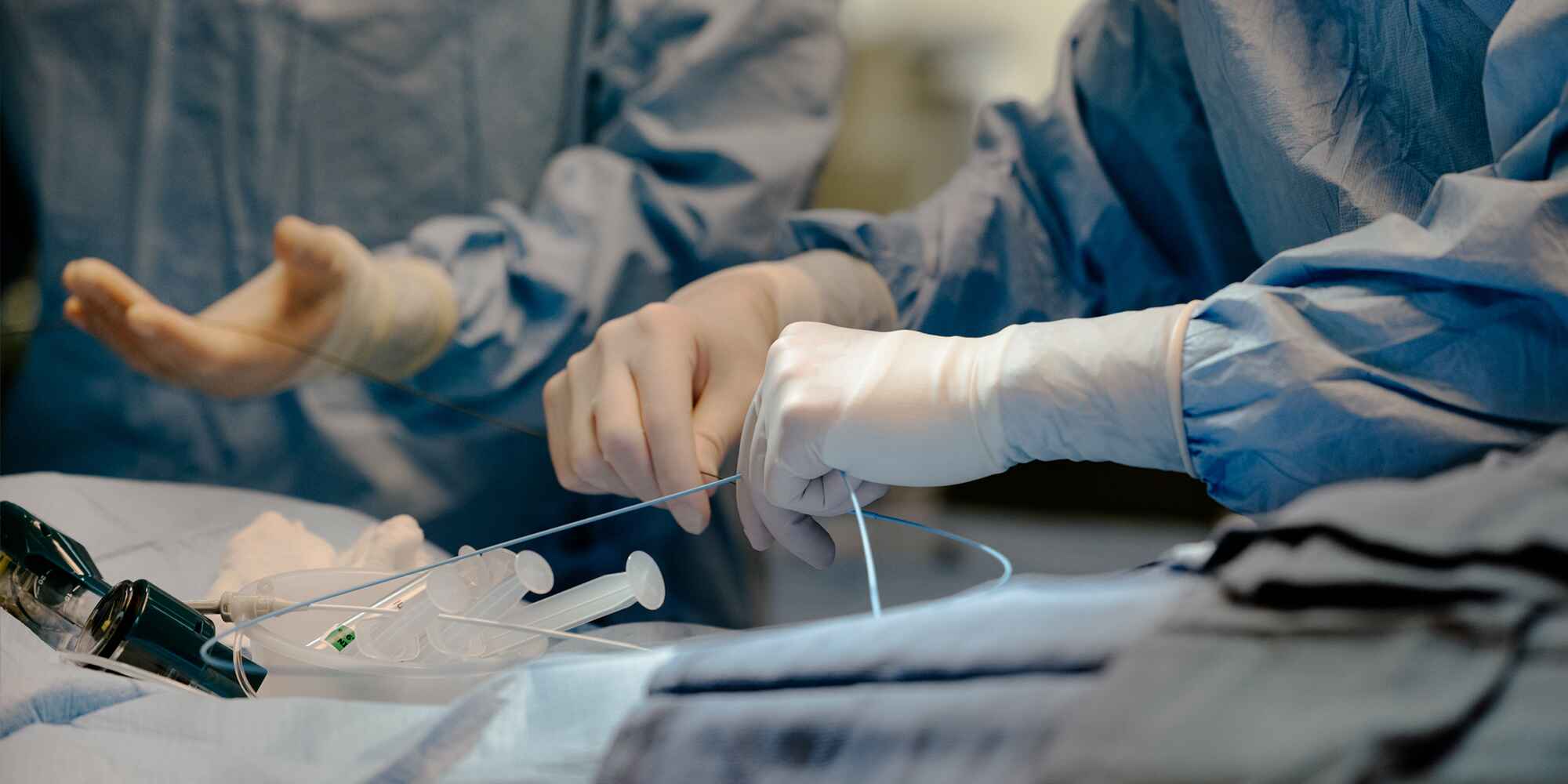Cardiac Catheterization
Cardiac catheterization is a minimally invasive heart procedure that can help you reclaim your well-being. Whether you need emergency heart attack treatment or relief from nagging symptoms, we are here for you. You receive services from highly skilled experts who consistently achieve excellent results.
What is Cardiac Catheterization?
Cardiac catheterization is an alternative to surgery that accesses the heart using thin tubes (catheters) we insert into an artery. Tiny instruments at the catheter tip enable us to detect, diagnose, and treat heart issues. Real-time imaging provides enhanced views of the treatment area for precise care. This method is gentler on your body, so you can expect a quick recovery.
Why Choose St. Peter’s Health Partners for Cardiac Catheterization?
St. Peter’s Health Partners is a trusted name in cardiovascular services, including cardiac catheterization. Our team includes fellowship-trained interventional cardiologists who specialize in catheterization procedures. And our entire team’s diligent attention to your needs helps us maintain high patient satisfaction rates. Meet our team.
Our cardiac catheterization program includes:
- Quality: We use leading methods reflecting the latest science in cardiac catheterization. You also benefit from advanced cardiac catheterization imaging technologies that provide superior views of treatment areas. These capabilities enable us to deliver the high-quality services our program is known for.
- National Recognition: Our commitment to excellence has helped us achieve prestigious recognition from U.S. News & World Report. We have maintained “high performing” ratings in multiple categories, including heart bypass surgery, heart failure, and transaortic valve replacement (TAVR).
- Coordination: Some cardiac cath labs also have surgical equipment enabling us to perform hybrid procedures. Heart surgeons join our interventional cardiologists to deliver multiple therapies in a single operation. Treatment may include catheter-based angioplasty (percutaneous coronary intervention) and coronary artery bypass graft (CABG), an open-heart surgery.
- Smooth Transitions: After catheterization, you recover under the careful watch of specially trained cardiac nurses. Outpatient cardiopulmonary rehabilitation helps you safely return to daily life after leaving the hospital. Across all settings and programs, teams are in regular communication to ensure your recovery moves forward.
Cath Labs are Used to Diagnose Heart Disease, Using:
- Biopsy, which involves taking a sample of heart tissue for examination under a microscope
- Hemodynamic Assessment to measure oxygen and pressure levels
- Coronary Angiogram to detect narrow or blocked heart blood vessels
- Evaluations to diagnose heart defects and valve issues
- Ventriculogram to assess the heart’s pumping ability
- Ventriculogram to assess the heart’s pumping ability
- Alcohol Septal Ablation to thin the wall (septum) that separates the heart’s upper chambers and improve blood flow
- Angioplasty (percutaneous coronary intervention) to widen a narrowed or blocked artery
- Balloon Valvuloplasty to repair heart valves that are too narrow
- Catheter Ablation, which destroys focused areas of heart tissue to stop irregular heart rhythms
- Congenital Heart Defect Repairs, which include closing holes in heart walls
- Heart Valve Replacement such as transaortic valve replacement (TAVR)
- Stent Placement uses a hollow mesh device to keep damaged arteries open
- WATCHMAN™ device implants to close off a pocket of heart tissue to prevent blood clots
Cardiac Catheterization: What to Expect?
If catheterization is right for you, here’s what to expect:
- You will be awake the entire time, but we give you medications to help you relax.
- We make a small incision. Depending on the services you need, it may be in your groin, wrist, or neck.
- The interventional cardiologist inserts a catheter through the incision and advances it to reach the heart.
- Real-time imaging shows the precise location of the catheter on a large screen. It also provides high-definition views of the treatment area.
- We carry out the test or treatment you need. When using a hybrid approach, we work alongside heart surgeons to coordinate services.
- When the procedure is complete, we remove the catheter. You typically need only a bandage to protect the incision while it heals.
- Some patients go home the same day. If you receive therapies like angioplasty and stenting, you may need to stay in the hospital overnight or longer.

